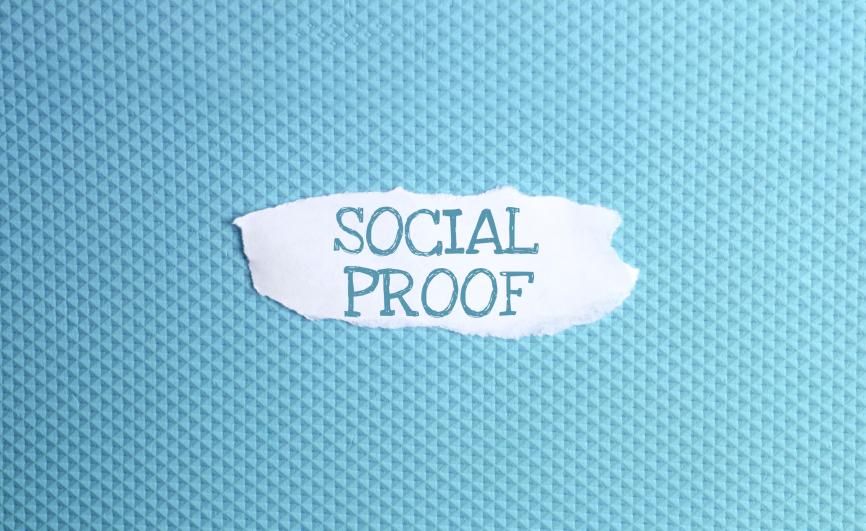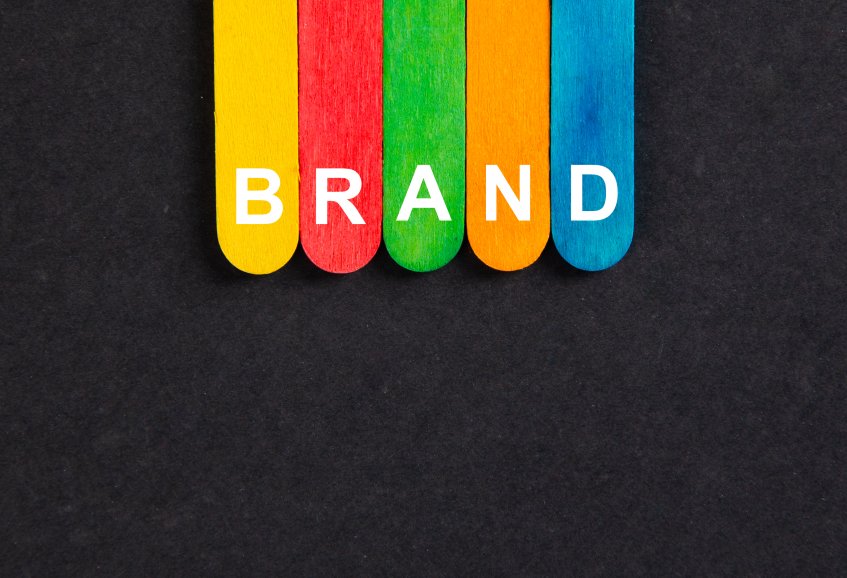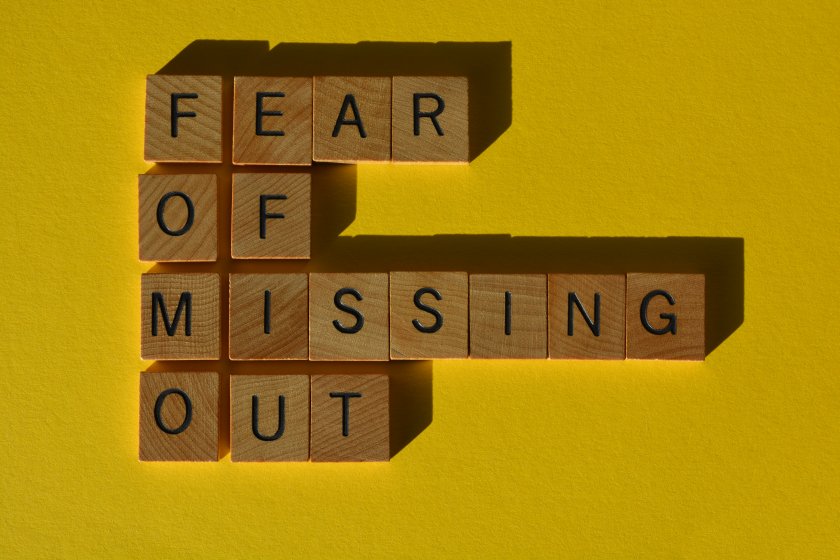In a world of information and constant communication, connecting with your audience has become a prized skill. The underlying psychology is a key contributor that bridges your brand and your audience.
Psychology is as vast as there are different people. So, how do you improve your brand by building stronger connections with your audience?
You can build stronger brand-audience connections through the following:
- Using emotion to personify your brand
- Social proof to introduce excellence
- Storytelling to give your brand a personality and identity
- Colors to build brand recognition
- Fear of missing out (FOMO) psychology
- Reciprocity
Psychology is one of the primary players contributing to your success. Let’s delve deep and cover the use of emotion, excellence through social proof, and forming a personality and identity for your brand. We’ll also cover the power of giving without expecting an immediate return and evoking feelings of scarcity and missed opportunity.
1. Using Emotion: Personify your Brand
We use our emotions daily, making us highly emotional beings. Our decisions and perceptions are the driving force behind our emotions. When you evoke specific emotions through your branding, you can formulate a more memorable experience for your audience.
The key to utilizing the right emotion lies in understanding your target audience, their aspirations, and the emotions that align with your brand values. Consider the following example:
Imagine you are launching a line of eco-friendly household cleaning products. Instead of simply promoting its features and benefits, you pour your time and resources into evoking emotions. They will help to separate your product from the competition and make it meaningful.
You develop a brand story that emphasizes environmental conservation. In your story, you stress the importance of caring for our planet and how it will affect future generations.
You highlight the harmful effects that conventional cleaning products have on the environment. The effects reach out as far as individual households and families. Using the right visuals and messaging will evoke emotions such as compassion, responsibility, and hope.
To drive your campaign home, you craft a compelling narrative around the creation of your products. Share stories of your team’s dedication to developing non-toxic formulas, using sustainable packaging, and supporting environmental initiatives.
You mention that your brand partners with multiple non-profit organizations that share your dedication to environmental conservation. A portion of your profits goes to their cause to help make the environment safer and more enjoyable for everyone.
Visual and Design Elements
Colors, typography, imagery, and design elements also play a vital role in emotion. Warm colors like orange can instill energy and excitement. Cool colors like blue bring about calmness or trust. Choose the correct colors to ensure your audience receives your brand correctly.
What’s great with the rise of generative artificial intelligence is that you don’t need to be an artist or an experienced graphic designer to create outstanding visuals. AI can be your branding strategy’s secret weapon where you just need to use the right prompt, use tools like MidJourney or StableAI to create amazing images.
2. Social Proof: Using Others to Create Brand Excellence
Social proof is a psychological phenomenon where your audience looks to others for guidance in decision-making. Your audience mimic’s the behavior of others because they are on the fence and assume those around them are more knowledgeable. The term first appeared in Robert Cialdini’s book, Influence: Science and Practice, where he coins the phrase and explains the meaning.
Since social proof results from uncertainty, integrating social proof allows you to instill trust, reduce decision-making anxiety, foster a sense of belonging, and positively influence your audience’s behavior.
To leverage social proof effectively, you should employ the following:
- Highlight positive customer experiences through testimonials.
- Have reviews that your audience can look up.
- Back your brand with case studies.
- Have user-generated content where your audience can speak for themselves.
- Display social media engagement metrics such as likes, shares, and comments.
- Partner with influencers or thought leaders who align with your brand values.
When individuals observe others engaging with your brand, it influences their perception and inclination to do the same. One example is using the warehouses of an established company like Amazon to pack, store, and ship your products.
Here’s another example:
Let’s say you have a clothing brand that specializes in athletic wear. The athlete is highly respected, exceptional at what they do, and carries a lot of influence in the sports industry. They also have millions of fans on social media. You choose to employ social proof by collaborating with this famous athlete.
You feature the athlete in your clothing line, showcasing your products in their training videos, competitions, and lifestyle posts. When their fans see them wearing your athletic brand, they will automatically associate it with excellence, success, and performance.
According to the fans, if their role model chooses to wear specific attire, it has to be a reliable and high-quality choice for athletic apparel. Your brand will quickly become more trustworthy and gain popularity.
Want to unlock the power of psychology to forge unbreakable bonds with your audience?
Contact Growth Hackers
3. Crafting your Brand Narrative: Building a Compelling Story
Storytelling is excellent at evoking emotion and communicating your brand’s values, mission, and vision in a compelling and relatable manner. Your brand forms a relatable identity by crafting narratives that elicit emotions such as joy, inspiration, nostalgia, or empathy.
When you want storytelling to be particularly compelling, ensure that your stories are authentic. By sharing original stories about your brand’s journey, values, or the people behind it, you create a connection based on shared experiences and common ground. The human touch is always more appealing and more easily fosters credibility.
Stories have the unique ability to immerse your listener in a fantasy that evokes specific emotional responses. A compelling story will resonate with your audience’s values. Emotions like empathy, inspiration, or nostalgia are potent emotions that foster unique bonds between your brand and your audience.
4. Building Brand Recognition: Color Establishes Identity
Colors are powerful enough to elicit specific emotions and feelings in us all. Different colors are associated with varying psychological responses. Reds bring about feelings of passion and positive energy, but blues are harmonious and green signifies trust.
When you consistently use specific colors across your website, logo, marketing materials, and product packaging, you create visual consistency that becomes synonymous with your brand. Even if you sell a service such as product photography rather than a product itself, you’ll need to create a portfolio website, logo, and all other media and marketing with a cohesive color scheme that evokes an emotion. Eventually, your audience will associate those colors with your brand, giving it familiarity.
Let’s use Apple as an example of a brand that is instantly recognizable and take a closer look at how they achieved this:
Apple chose specific black, gray, and white as their palette.
- Simplicity and Minimalism – Apple’s color choices align with its simplicity and minimalist design philosophy. It also represents a clean, sleek aesthetic synonymous with Apple’s brand identity.
- Elegance and Sophistication – Black and gray add qualities of elegance, sophistication, and premium quality. It creates a high-end and appealing image.
- Timelessness – Apple’s color palette remains consistent, avoiding trends and ensuring a lasting appeal that transcends changing fashions.
- Focus on Product – The neutral colors keep the focus on the product design and features of the devices, highlighting their form and functionality.
- Universal Appeal – Black, white, and gray are neutral colors that integrate easily into various cultures and markets without conflicting with local color symbolism.
5. Creating Urgency and Desire: The Psychology of FOMO
The fear of missing out carries a psychological trigger that appeals to your audience’s emotions. It creates a sense of scarcity, exclusivity, and urgency for your products, services, or opportunities.
Effective use of FOMO involves the following key factors:
- Triggering strong emotions
- Providing social proof and validation
- Offering exclusive rewards and opportunities
- Including a clear call to action
Creating A Sense of Scarcity
FOMO leverages the principle of scarcity, where limited availability or exclusivity of a product, service, or opportunity creates a sense of urgency and desire. When you highlight that something is scarce or time-limited, you trigger the fear of missing out on a unique or valuable experience. This can be an immensely powerful trigger that leads your audience to take action to avoid missing out.
Social Proof and Social Validation
FOMO often relies on social proof and social validation to amplify its impact. When skeptics see others participating in or benefiting from your brand, they will find it more desirable. FOMO will trigger because they don’t want to miss out on the positive experience. This creates a sense of social pressure and further fuels the connection-building potential.
Exclusive Opportunities and Rewards
When you make certain rewards or opportunities exclusive or limited, you trigger FOMO. These unique experiences, early releases, limited editions, or special promotions make your audience feel privileged and valued. It builds stronger audience connections because they perceive themselves as part of an exclusive community. It’s also an effective method for building customer loyalty.
Remember, you should use FOMO ethically and responsibly; otherwise, you may lose trust and credibility with your audience.
Get ready to use psychology to build stronger connections with your audience today!
6. The Reciprocity Loop: Engaging your Audience Through Giving
Reciprocity is about giving your audience something that they will find valuable without expecting an immediate or specific return. It should be genuine, authentic, and based on the desire to help and connect with your audience.
Reciprocity is the principle of giving back to others when they have given something to us. It creates a positive exchange cycle, builds trust and credibility, strengthens engagement and loyalty, and differentiates you from competitors.
To use reciprocity effectively, you should offer something valuable to your audience without expecting anything in return. It proves you care about their well-being and want to create a long-term relationship.
Creating a Positive Cycle
When your audience perceives that you’ve given them something valuable, they will be much more likely to reciprocate by engaging with you. They consider it a mutual exchange and want to support your content or even make a purchase.
Building Trust and Credibility
Providing your audience with valuable content, resources, or experiences shows them you’re willing to invest in their well-being. This generosity enhances your reputation as a trustworthy and reliable brand, making your audience more receptive to your future messages and recommendations.
Strengthening Engagement and Loyalty
When you engage in reciprocal acts, it more often than not leads to loyalty from your audience. An audience that feels like you always go above and beyond to provide value will become an advocate for your brand.
Differentiating from Competitors
You consistently provide value and create a positive experience through reciprocal gestures, distinguishing your brand from competitors. In return, you establish a meaningful rapport with your audience. They will, in good faith, support you and believe in your vision.
Final Words on Branding Science
Emotion, social proof, and storytelling are all heavy hitters that build trustworthiness and reliability for your brand. It’s effective because the assurance flows not only from you but other trustworthy sources, too. FOMO and reciprocity go hand-in-hand to add value and invest in your audience. In return, they also appreciate you and want to support your brand! Best of luck in your next venture!
Growth Hackers is one of the leading startup branding agencies helping businesses from all over the world grow. There is no fluff with Growth Hackers. We help entrepreneurs and business owners use psychology to build stronger connections with their audience, increase their productivity, generate qualified leads, optimize their conversion rate, gather and analyze data analytics, acquire and retain users and increase sales. We go further than brand awareness and exposure. We make sure that the strategies we implement move the needle so your business grow, strive and succeed. If you too want your business to reach new heights, contact Growth Hackers today so we can discuss about your brand and create a custom growth plan for you. You’re just one click away to skyrocket your business.









